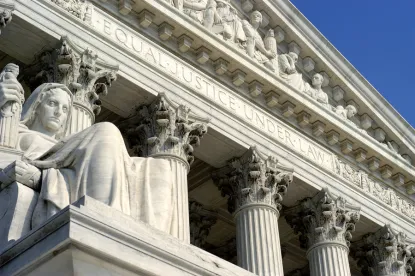A nearly 20-year dispute between two competitors in the apparel industry will be heard by the Supreme Court Monday January 13, 2020, on the legal issue of claim preclusion – highlighting the practical pitfalls of releasing trademark infringement claims in settlement agreement between parties that continue to use the marks at issue. The case is Lucky Brands Dungarees, Inc. v. Marcel Fashion Group, Inc., Case No. 18-1086.
The practical lessons to draw from this dispute are numerous:
- the importance of initially clearing marks and implementing a plan to handle potential third party objections
- strategic enforcement as to when, and against whom, to enforce trademark rights – and squarely on point with this nearly 20 year battle now before the Supreme Court
- careful drafting of what claims are released in the context of future use of the same or similar trademarks.
The specific issue before the Supreme Court as phrased by Lucky is whether, when a plaintiff asserts new claims, federal preclusion principles can bar a defendant from raising defenses that were not actually litigated and resolved in any prior case between the parties.
Like most cases that end up before the Supreme Court there is a long road of litigation that leads there. This case is no different, with no less than three separate lawsuits – two brought in 2001 and 2011 by smaller apparel maker Marcel that has used the name “Get Lucky” and long accused jeans maker Lucky Brand of infringing its trademarks. And one brought by Lucky in 2005 against Marcel. The 2011 suit filed by Marcel included two visits to the Second Circuit before ending up at the Supreme Court.
Claim preclusion prevents a party from relitigating the same claim, between the same parties, when an earlier action resulted in an adjudication on the merits. Lucky argues the claims are not the same because it concerns infringement after the 2005 litigation concluded. Marcel argues that the claims are from the same “series of transactions” because Lucky’s current infringement is a continuation of prior wrongful conduct.
The Second Circuit is not the first to recognize “defense preclusion”, however, this case puts this issue squarely before the Supreme Court. Both parties rely on public-policy arguments – promoting efficiency and preserving judicial resources.
Whether there is claim preclusion here depends on how the test is applied to the facts here which differ based on each parties’ interpretation of the 2003 release language. Marcel argues that Lucky is not entitled to a “rematch” because it continued infringing Marcel’s trademark in the identical manner for which it was held liable in the prior suit. Lucky argues that the claims are not the same because it is alleged infringement post-release.
Lucky also argues that the Second Circuit ruling would allow long-dormant offensive claims to be raised but preclude corresponding defenses to those claims that were not previously resolved. Specifically Lucky notes that the Second Circuit ruling would require defendants to litigate every defense “no matter how peripheral” all the way to judgment in every case to avoid being barred from raising the defense in the future. “Counsel for defendants will be reluctant to advise dropping defenses, lest their clients be ‘precluded’ in some future case and then accuse them of malpractice,” according to Lucky’s brief.
The legal issue of whether claim preclusion should apply to defenses is relevant to all parties involved in any litigation. This case in particular highlights the importance of precise crafting of release language particularly when both parties anticipate continued use of similar trademarks at issue. The Supreme Court’s ruling will provide guidance on how aggressively claims and defenses need to be made during litigation.




 />i
/>i
